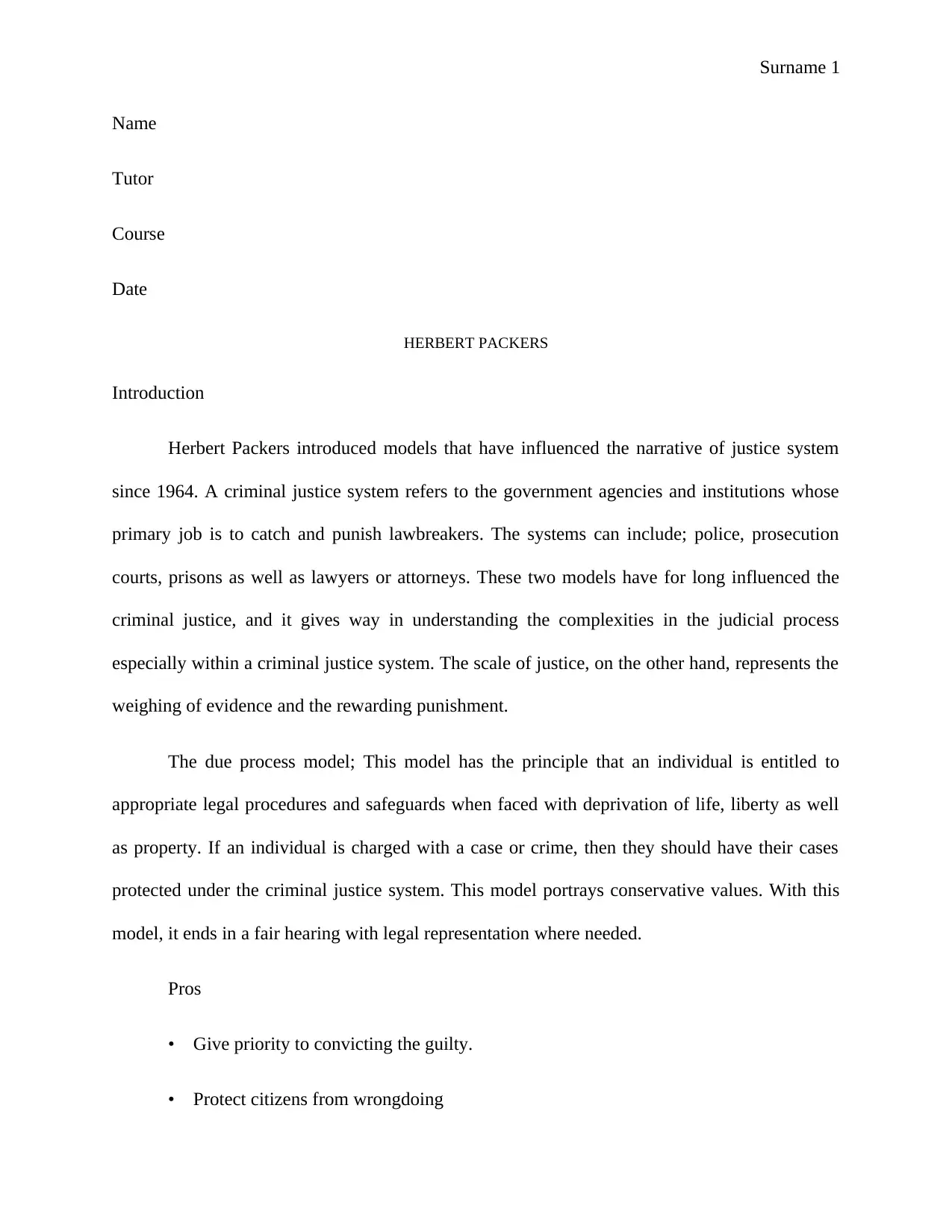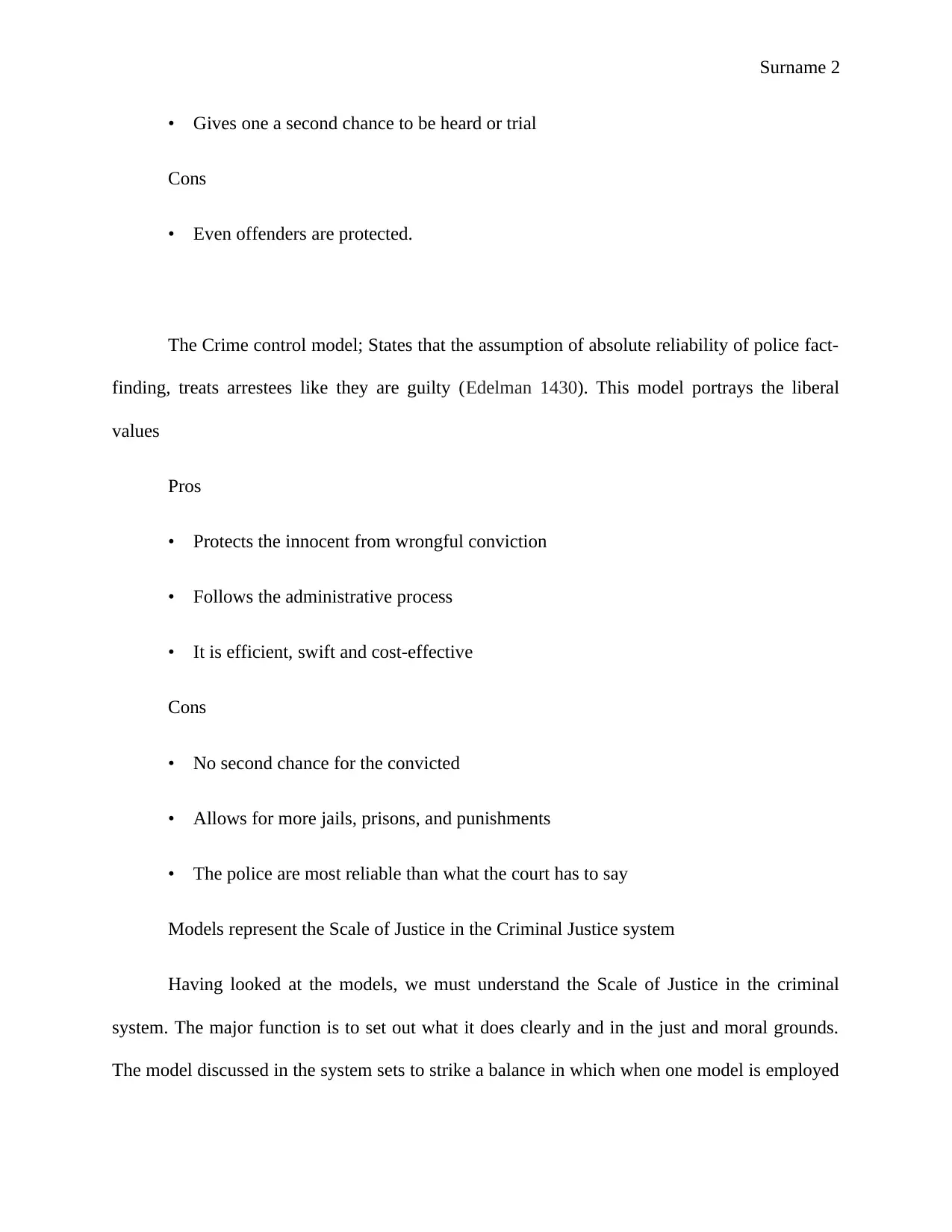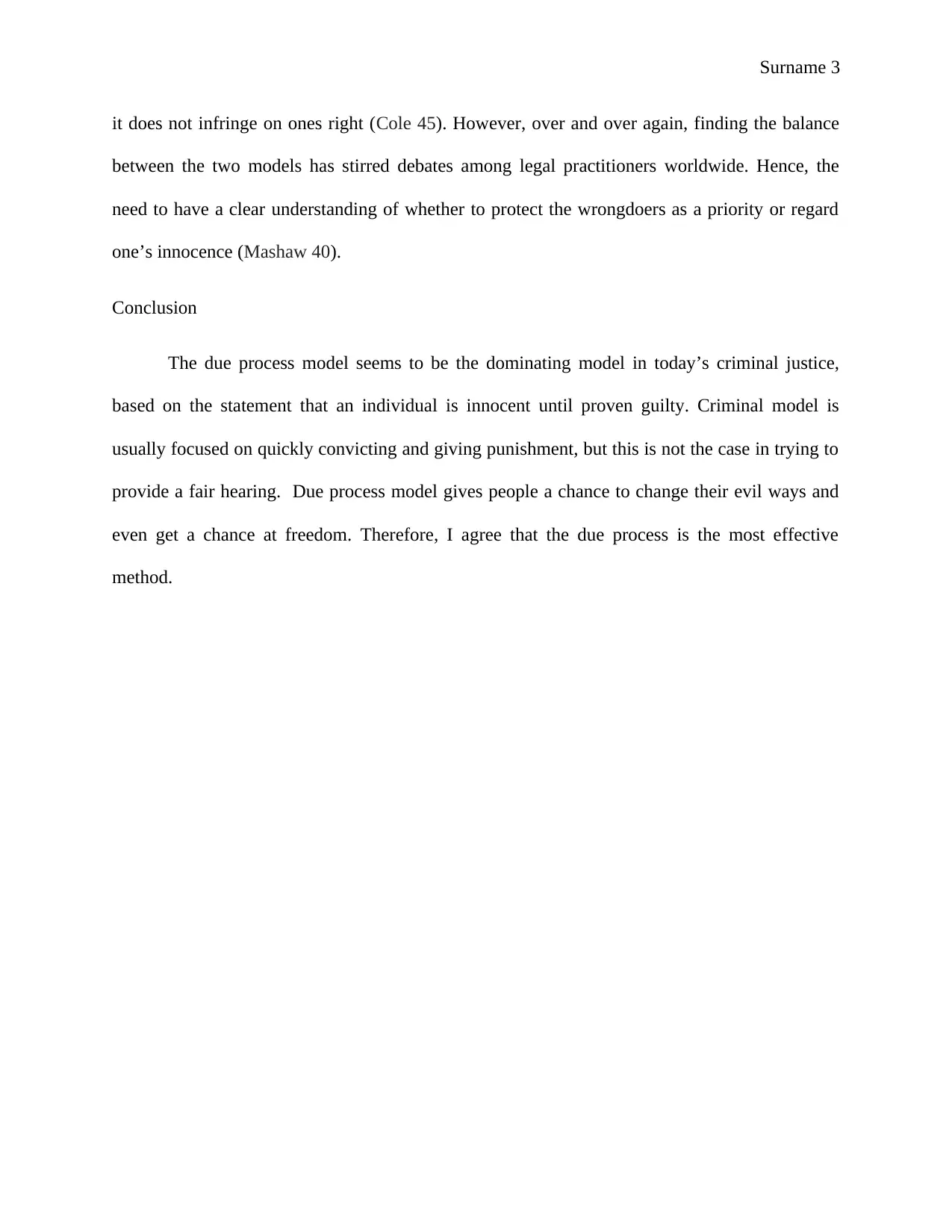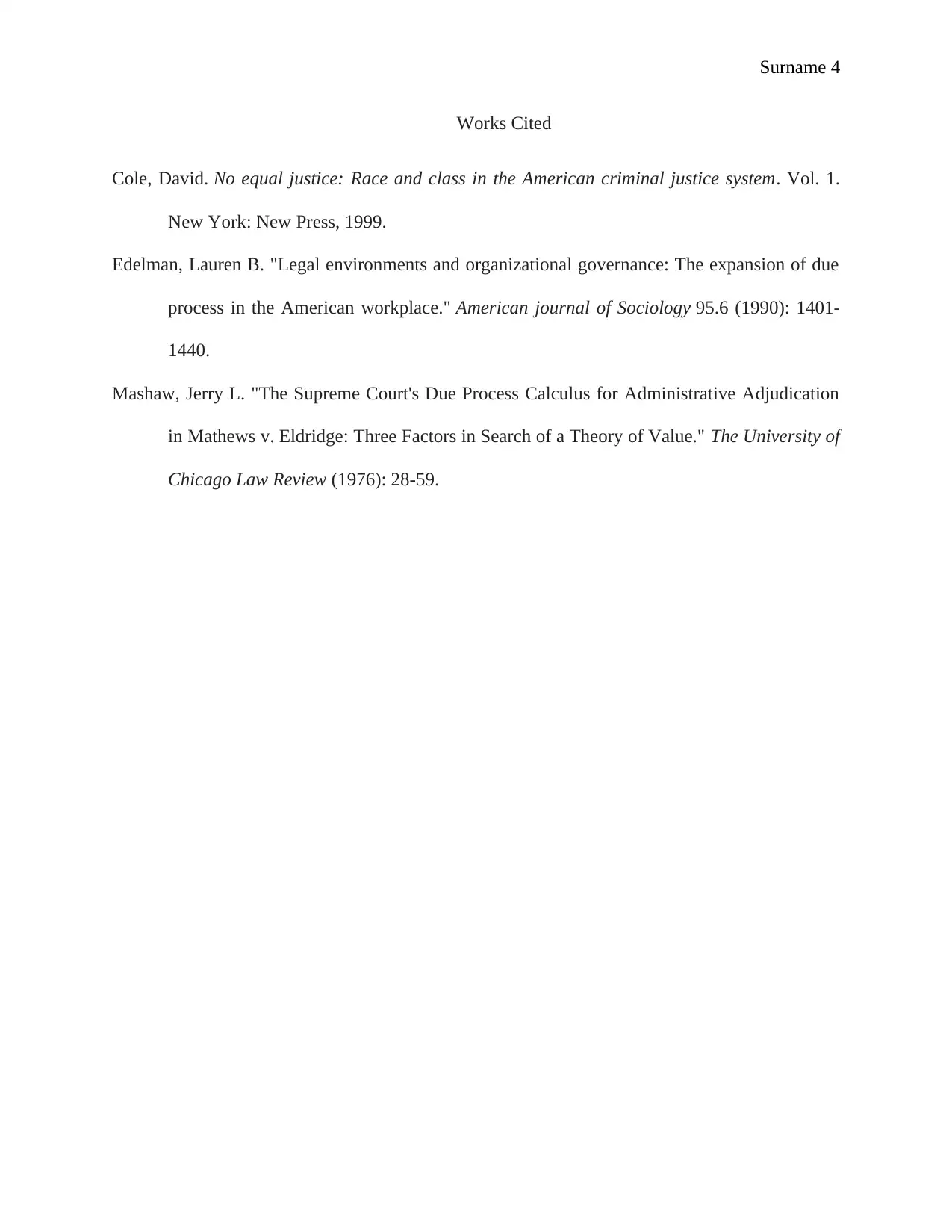Criminal Justice: Comparing Models, Scale of Justice, and Due Process
VerifiedAdded on 2023/06/10
|4
|645
|206
Report
AI Summary
This report analyzes the criminal justice system, focusing on the models and the scale of justice. It begins by introducing the influence of Herbert Packer's models on the criminal justice system, specifically the due process and crime control models. The due process model emphasizes legal procedures and protecting the rights of the accused, prioritizing fairness and the opportunity for a fair hearing. Conversely, the crime control model prioritizes convicting the guilty, sometimes at the expense of individual rights. The report then explores how these models relate to the scale of justice, discussing how the balance between protecting the rights of the accused and ensuring public safety has influenced the criminal justice system. The author concludes that the due process model is the most effective, emphasizing the importance of innocent until proven guilty, with a focus on fair legal representation and the opportunity for rehabilitation.
1 out of 4










![[object Object]](/_next/static/media/star-bottom.7253800d.svg)